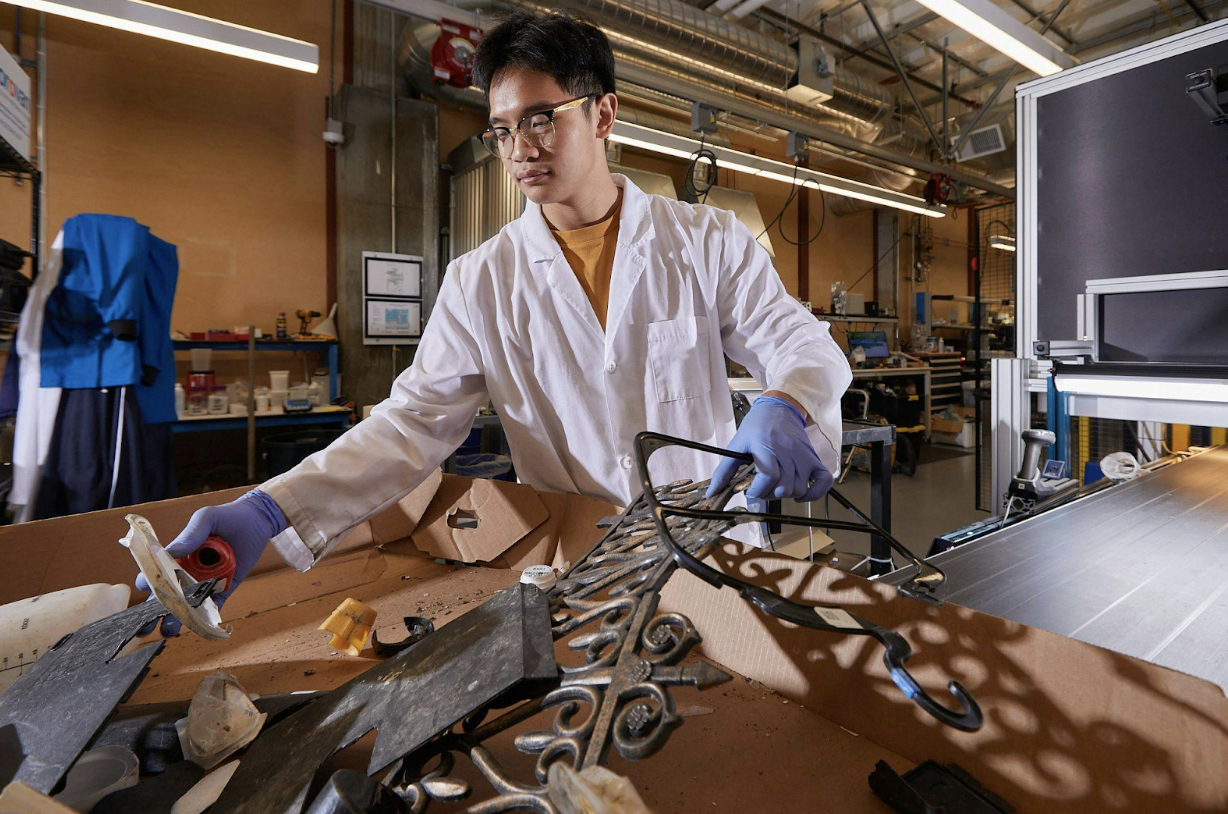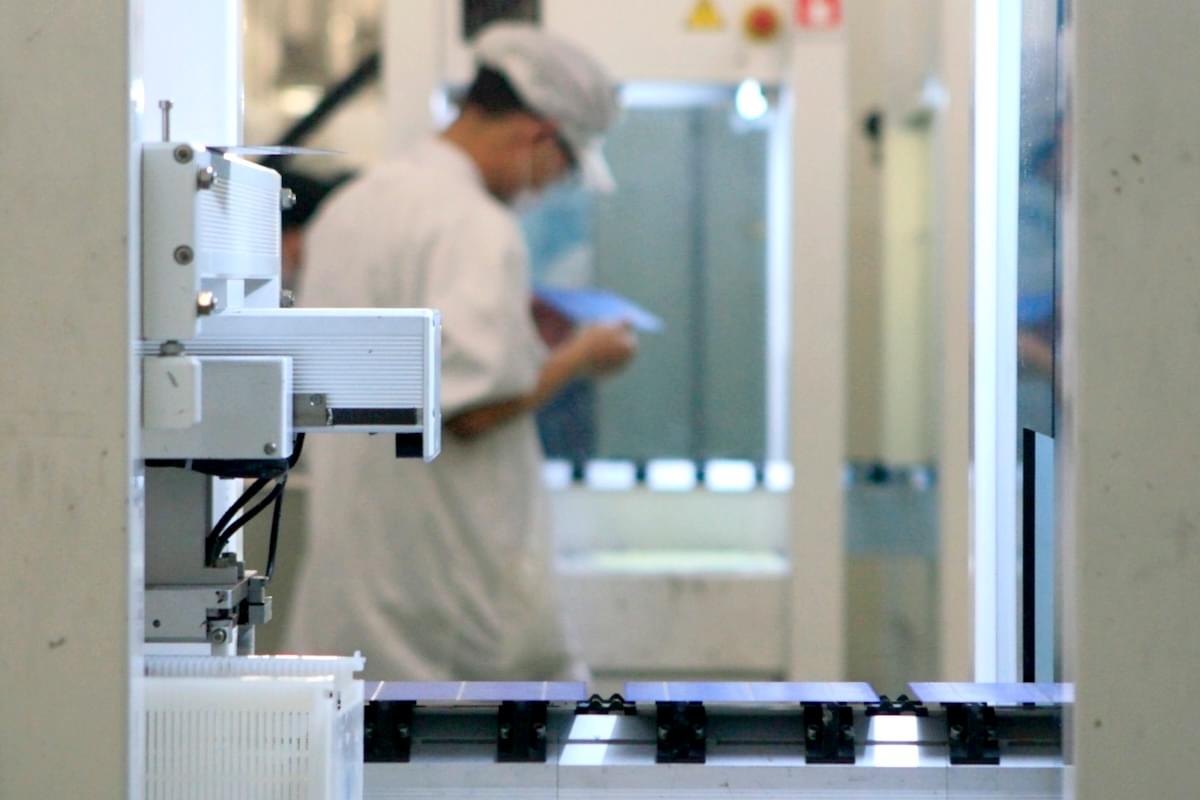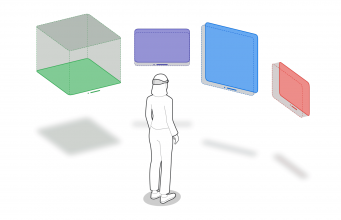Why are airline seats so small? It all started in 1978.
Seats and legroom have shrunk over the years as Americans have gotten larger. Experts warn that could be a recipe for a disaster. The post Why are airline seats so small? It all started in 1978. appeared first on Popular Science.

Earlier this year, while boarding a flight out of Houston, Texas, I noticed my slightly overfilled, bulging backpack wouldn’t quite fit in the space between my feet. I bent down, trying to smoosh it into place—only to realize I couldn’t actually reach the cabin floor without my face slamming into the seat in front of me. For a brief, heart-racing moment, I was stuck, looking like a MythBusters crash dummy bracing for impact. Were airline seats always this cramped? Or had I just gotten that much bigger?
It turns out, I wasn’t alone. Nearly everyone I’ve spoken to since has had a similar thought. Plane seats, they argue, have definitely gotten smaller. Experts interviewed by Popular Science confirm that hunch: some seats are indeed shrinking, even as passengers are, on average, getting larger. Meanwhile, airlines are capitalizing on minimal seat-size regulations to pack more people into each flight. The result? Higher revenues for top carriers and supposedly cheaper tickets.
But experts warn that shrinking airplane seats may also come with potential health risks for some passengers. Worse still, smaller seats and fuller flights could make emergency evacuations more difficult—and potentially more dangerous.
“We’ve been extremely lucky,” American Enterprise Institute Senior Fellow for Aviation and Travel William McGee told Popular Science. “Americans are getting larger, the seats are getting tighter, the planes are getting fuller.”
It’s not your imagination — airline seats and legroom are shrinking
McGee has kept tabs on shifting seat sizes over the past two decades and says they are indeed getting more cramped. According to his analysis, American, Delta, Southwest, and United have each lost between 2 and 5 inches of legroom and around 2 inches of seat width since the 1980s. The average legroom on those carriers today is 31 inches, down from 35 inches in the late 20th century. There’s even less room—just 28 inches—on budget airlines like Spirit and Europe’s Wizz Air, McGee notes. This shrinking has occurred gradually over the years, a process he compares to the metaphor of a frog slowly boiling in water.
“They [airlines] just kept whittling it down until finally it got to the point where just about everybody noticed it.”
Now, at full boil, travelers are increasingly complaining about an unreasonable lack of legroom and other basic comforts. As of 2022, according to the passenger rights organization FlyersRights, less than half of U.S. airline passengers can reasonably fit in economy seats—a figure that dips even lower for budget airlines. When the Federal Aviation Administration (FAA) opened a public comment period about seat sizes, it reportedly received more than 26,000 overwhelmingly negative responses describing seats as “crammed,” “miserable,” “terrible,” and potentially hazardous to health.
“The average human can barely sit cross-armed and holding in all their parts as much as possible,” one commenter wrote, according to Forbes.

Americans are getting bigger
Airplane seats are getting smaller just as Americans, on average, are getting larger. As of 2015, according to the U.S. Centers for Disease Control and Prevention, the average U.S. adult weighs 15 pounds more than they did 30 years ago. Adult women now weigh roughly as much as men did in the late 1990s. Americans have also grown slightly taller during that time, though those increases have tapered off in recent years And yet, FlyersRights President Paul Hudson tells Popular Science that airline seats have remained shockingly similar (or smaller) in size since the 1960s. Hudson says the airline industry’s lack of adjustment to changing body sizes is unique.
“Every other place where you look at the seating, the seats have gotten bigger to match the fact that people are getting bigger,” Hudson said. “If you look at theaters, you look at automobile seats, [or] any other venue seats have gotten larger. Only on airlines have they gotten smaller. So they’re going the opposite way from where the human body is going.”
Deregulation and profit maximization may be to blame
It might be hard to imagine now, but flying wasn’t always so stress-inducing. Vanderbilt University law professor and researcher Ganesh Sitaraman attributes much of the airline industry’s apparent dysfunction to one pivotal piece of legislation: the Airline Deregulation Act of 1978. Until then, Sitaraman writes in his 2023 book Why Flying Is Miserable: And How to Fix It, the industry was dominated by a handful of major carriers, and basic services—not just safety—were heavily regulated. Tickets generally cost more than today’s cheapest options, but they included many “optional services,” such as checked baggage, that are now charged à la carte. Overall standards for seat comfort and customer service were also arguably higher. Unlike today, Sitaraman notes, airlines were regulated as a public utility, meaning they were treated differently from other everyday goods or services in a free market.

That changed in 1978. Critics of the old system argued it created a cartel-like environment, where large, inefficient companies were able to consolidate due to a lack of competition. By deregulating, the theory went, more upstart airlines would enter the market leading to lower ticket prices and better service for consumers. That seemed to hold true, at least initially.
Deregulation, Sitaraman notes, led to an initial “major burst” of competition followed quickly by a “wave of consolidation.” Wages across the industry declined, and less profitable routes to smaller cities were reduced or axed altogether. The promise of copious amounts of profitable new airlines, meanwhile, evaporated like jet fuel on a hot tarmac. Today, the “Big Four” airlines (United, Delta, American, and Southwest) control around 80 percent of the US market.
“Deregulation was a transformative, radical, sweeping policy,” Sitaraman writes. “In just a few short years, the airline industry went from being structurally regulated—entry, routes, prices—to deregulated…Fees are higher, seats are smaller, and the experience of flying seems to be getting worse.”
[Related: Why do we still have to use airplane mode?]
Experts speaking with Popular Science say changes in the regulatory environment—along with the FAA’s refusal to set minimum seat size requirements—are central to why airline seats continue to shrink. Today, with seats so cramped, it’s become routine for airlines to charge passengers extra for “upgraded” tiers of economy, with names like Economy Plus, which offer slightly more legroom and space. This system allows airlines to advertise rock-bottom base fares on booking sites like Expedia, while still pulling in more revenue from travelers willing to pay for a bit more comfort.
All of that, McGee says, has created a dual-tier system of “haves and have-nots,” with a small group of well-treated business travelers at the top and a much larger pool of infrequent fliers being nickel-and-dimed for seating space that used to be standard.
“The strategy is to make it so that you have a choice of torture class versus somewhat humane class,” Hudson added.
Airlines for America, a trade group representing the major airlines, did not immediately respond to Popular Science’s requests for comment but previously told CNN it considers safety a “top priority.”
“Airlines continue to invest in a wide range of innovative technologies to maximize personal space in the cabin while maintaining a level of comfort passengers expect,” the group said in a statement sent to CNN.
Smaller seats aren’t just uncomfortable; they could be dangerous
Though small seats may be a bearable nuisance on short flights, both McGee and Hudson warn they could become potentially dangerous on longer hauls of five hours or more. Prolonged sitting in cramped conditions, they say, increases the risk of blood clots—particularly for people with obesity. In rare cases, those clots can lead to serious conditions like pulmonary embolism or venous thromboembolism. CDC guidelines recommend passengers move around every two to three hours to reduce this risk, but anyone who’s flown through extended turbulence knows that’s often easier said than done.
But experts said smaller, cramped seats also risk making it harder to safely evacuate planes during emergencies. FAA regulations require airlines to demonstrate that a full plane can be evacuated in 90 seconds. That’s challenging under ideal conditions, but today’s crowded cabins make it even harder. Flights are more packed than ever—partly because of smaller seats—and with standard bag fees, there’s now more carry-on luggage crammed into overhead bins and under seats. Add in service animals, loose phone chargers, and other cabin clutter, and you have what McGee describes as a potential recipe for disaster.
“If you look at all of these factors, the fact is that the challenge of safely evacuating a plane in a life and death emergency keeps increasing,” McGee said.
The FAA, the airline industry’s top regulator, has the authority to mandate a minimum seat size if it determines that cramped seating contributes to safety risks, like longer evacuation times. In 2019, the agency conducted a test simulation of an emergency evacuation to answer that question and concluded that “seat size and spacing did not adversely affect the success of emergency evacuations.”
“Following extensive reviews, studies and input from public comments, the FAA determined that new seat-dimension regulations are not necessary for passenger safety,” an FAA spokesperson told Popular Science. “The FAA will continue to study real-world evacuations to inform its future decisions and will convene an Aviation Rulemaking Committee to examine potential improvements to evacuation standards.”
But Paul Hudson, who sat on a committee that observed the simulation in person, takes issue with the test’s methodology. The simulation, he claims, was conducted in a mock-up structure set up in a parking lot—not in an actual aircraft—and did not include any volunteers over the age of 60, children under 18, or people with physical disabilities. The test was also conducted in groups of 60 individuals, far fewer than the average full commercial flight. According to Hudson, it also excluded individuals over 250 pounds—a significant segment of the U.S. population that often struggles with standard seat sizes.
He’s not alone in his concerns. Illinois Senator Tammy Duckworth reiterated Hudson’s criticisms and even introduced legislation in 2022 urging the FAA to revise its emergency evacuation testing procedures to better reflect real-world conditions.

“Imagine being on a crowded flight when the worst-case scenario happens: the crew tells you that you have 90 seconds to evacuate—but how can more than 150 passengers on a crowded flight actually safely evacuate in less time than it takes to brush your teeth?” Duckworth said in a statement.
McGee echoed that sentiment in blunter terms.
“It was a very half-ass study,” he said
How travelers mitigate the effects of small seats
It’s unclear whether individual airlines—or the FAA—have any intention of changing their approach to seat sizes anytime soon. In the meantime, experts say there are a few steps passengers can take to give themselves a bit more breathing room. For starters, McGee says travelers who can afford to upgrade to tiers like Economy Plus should consider doing so, especially for longer flights. Larger passengers have also, for years, opted to purchase multiple adjacent seats, and some airlines will even try to actively accommodate those requests. That approach, McGee says it’s worth noting, is risky. Even if someone buys two seats assuming they’ll be side by side, airlines often reserve the right to alter seat placement up until departure.
Hudson, meanwhile, recommends that passengers take every opportunity they can to stand up and move around the cabin. He personally makes a habit of getting up whenever someone else in his row does, whether he originally planned to or not, noting that such opportunities can be unpredictable. Hudson also advises individuals who believe they may be at risk of clotting to consider taking over-the-counter blood thinners before flying to reduce that risk. At the end of the day, he says, travelers need to use their best judgment to counteract the potential health effects of being confined in cramped conditions for extended periods.
“Our bodies were not built to be sitting for a long, for hours on end in confined spaces,” Hudson said.
This story is part of Popular Science’s Ask Us Anything series, where we answer your most outlandish, mind-burning questions, from the ordinary to the off-the-wall. Have something you’ve always wanted to know? Ask us.
The post Why are airline seats so small? It all started in 1978. appeared first on Popular Science.













































































































































